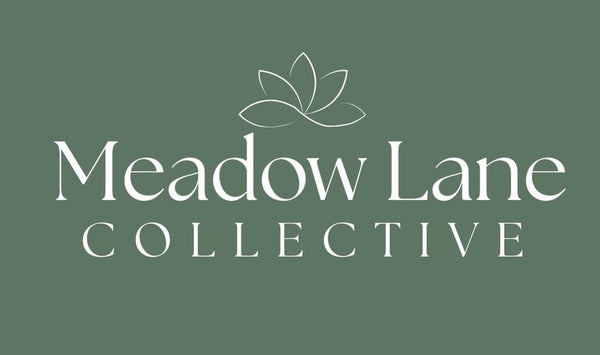The Dangers of BPA, Phthalates & Microplastics in Baby Products | Meadow Lane
The Dangers of BPA, Phthalates & Microplastics in Baby Products
We all want what’s best for our babies — healthy food, gentle products, and safe environments. But hidden in many everyday baby items are chemicals that may disrupt hormones, irritate developing systems, and silently build up over time.
Let’s take a closer look at three of the biggest offenders: BPA, phthalates, and microplastics — what they are, where they hide, and how to keep them far away from your little one.
🧪 1. What is BPA?
BPA (Bisphenol A) is a chemical used to harden plastics and make resins. It’s commonly found in:
- Plastic bottles
- Baby sippy cups
- Food containers
- Some baby toys
Why it’s dangerous:
BPA is an endocrine disruptor — meaning it can mimic hormones (especially estrogen) in the body and interfere with natural development. Even in low doses, BPA exposure has been linked to:
- Hormonal imbalances
- Early puberty
- Behavioural issues
- Immune system disruption
Even “BPA-free” products aren’t always safe — manufacturers often substitute with BPS or BPF, which may carry similar risks.
🧴 2. What are Phthalates?
Phthalates are a group of chemicals used to soften plastics. You’ll find them in:
- PVC-based plastics (like some bibs or teething toys)
- Baby lotions, shampoos, and wipes (fragrance binding)
- Vinyl changing pads
- Plastic wrap and cling film
Why they’re dangerous:
Phthalates are linked to:
- Reproductive and hormonal disruption
- Asthma and respiratory issues
- Obesity and insulin resistance
They’re especially concerning during pregnancy and early childhood, when hormonal systems are forming.
🧩 3. What Are Microplastics?
Microplastics are tiny particles shed from plastic products as they degrade over time. You won’t see them — but they’re everywhere.
In baby gear, microplastics can come from:
- Scratched plastic plates and bowls
- Chewed-on plastic utensils
- Toys made from lower-grade polymers
Why they’re dangerous:
Research is still emerging, but microplastics have been found to:
- Cause inflammation in the gut
- Alter microbiome balance
- Cross the placenta during pregnancy
- Accumulate in organs and tissues
Babies are especially at risk due to hand-to-mouth behaviours and developing detox systems.
🚫 How to Avoid These Chemicals
You don’t need to stress over every product. But these simple swaps make a big difference:
|
Swap This |
For This |
|
Plastic plates |
Stainless steel + LFGB silicone |
|
Plastic sippy cups |
Open cups with silicone sleeves |
|
PVC bibs |
Silicone or organic cotton bibs |
|
Fragranced baby wipes |
Water-based, fragrance-free options |
|
Plastic toys |
LFGB Silicone, wood, or fabric alternatives |
🌿 Nibble & Spoon: Designed Without Compromise
We created Meadow Lane after learning about these chemicals and realising that many “baby-safe” brands were still cutting corners. Our products are:
- Free from BPA, phthalates, PVC, and microplastics
- Made from food-grade stainless steel & LFGB-certified silicone
- Designed to last through years of daily use (and dishwasher cycles)
You shouldn’t have to choose between beautiful and safe. We make sure you get both.
❓ FAQ
Is “BPA-free” enough?
Not always. BPA-free plastics may still contain harmful BPA substitutes. It’s better to avoid plastic altogether in feeding gear.
Do phthalates wash off?
No — they’re often embedded in the material itself. That’s why it’s safer to avoid plasticised materials altogether.
How can I tell if a product contains microplastics?
If it’s made of plastic and gets scratched or worn down, it likely sheds microplastics. Opt for solid, non-plastic alternatives when possible.
